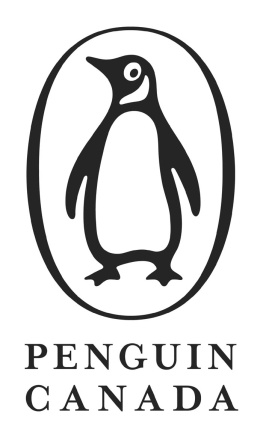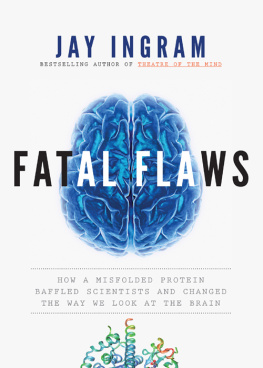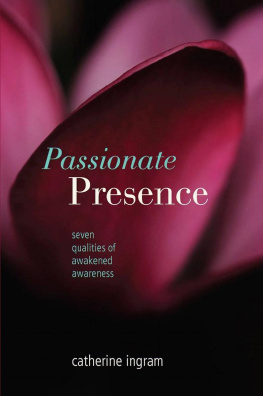Jay Ingram - The Science of Everyday Life
Here you can read online Jay Ingram - The Science of Everyday Life full text of the book (entire story) in english for free. Download pdf and epub, get meaning, cover and reviews about this ebook. year: 2006, publisher: Penguin Group, genre: Religion. Description of the work, (preface) as well as reviews are available. Best literature library LitArk.com created for fans of good reading and offers a wide selection of genres:
Romance novel
Science fiction
Adventure
Detective
Science
History
Home and family
Prose
Art
Politics
Computer
Non-fiction
Religion
Business
Children
Humor
Choose a favorite category and find really read worthwhile books. Enjoy immersion in the world of imagination, feel the emotions of the characters or learn something new for yourself, make an fascinating discovery.
- Book:The Science of Everyday Life
- Author:
- Publisher:Penguin Group
- Genre:
- Year:2006
- Rating:5 / 5
- Favourites:Add to favourites
- Your mark:
- 100
- 1
- 2
- 3
- 4
- 5
The Science of Everyday Life: summary, description and annotation
We offer to read an annotation, description, summary or preface (depends on what the author of the book "The Science of Everyday Life" wrote himself). If you haven't found the necessary information about the book — write in the comments, we will try to find it.
The Science of Everyday Life — read online for free the complete book (whole text) full work
Below is the text of the book, divided by pages. System saving the place of the last page read, allows you to conveniently read the book "The Science of Everyday Life" online for free, without having to search again every time where you left off. Put a bookmark, and you can go to the page where you finished reading at any time.
Font size:
Interval:
Bookmark:
PENGUIN CELEBRATIONS
THE SCIENCE OF EVERYDAY LIFE
JAY INGRAM has been the host of Discovery Channel Canadas Daily Planet since it began in 1995. At the time it was the only hour-long, prime-time, daily science show in the world. Prior to joining Discovery, he hosted CBC Radios national science show, Quirks and Quarks, from 1979 to 1992. During that time he won two ACTRA Awards, one for best host, and several Canadian Science Writers Awards. Ingram wrote and hosted two CBC Radio documentary series and short radio and television science stories for a variety of programs. He was a contributing editor to Owl magazine for ten years and wrote a weekly science column in the Toronto Star for twelve. He has also written ten books.
Ingram has received the Sandford Fleming Medal from the Royal Canadian Institute for his efforts to popularize science, the Royal Societys McNeil Medal for the Public Awareness of Science, and the Michael Smith Award from the Natural Sciences and Engineering Research Council. He is a distinguished alumnus of the University of Alberta and has received four honorary doctorates.
JAY INGRAM


Published by the Penguin Group
Penguin Group (Canada), 90 Eglinton Avenue East, Suite 700, Toronto, Ontario, Canada M4P 2Y3 (a division of Pearson Canada Inc.)
Penguin Group (USA) Inc., 375 Hudson Street, New York, New York 10014, U.S.A.
Penguin Books Ltd, 80 Strand, London WC2R ORL, England
Penguin Ireland, 25 St Stephens Green, Dublin 2, Ireland (a division of Penguin Books Ltd)
Penguin Group (Australia), 250 Camberwell Road, Camberwell, Victoria 3124, Australia (a division of Pearson Australia Group Pty Ltd)
Penguin Books India Pvt Ltd, 11 Community Centre, Panchsheel Park, New Delhi 110 017, India
Penguin Group (NZ), 67 Apollo Drive, Rosedale, North Shore 0632, New Zealand (a division of Pearson New Zealand Ltd)
Penguin Books (South Africa) (Pty) Ltd, 24 Sturdee Avenue, Rosebank, Johannesburg 2196, South Africa
Penguin Books Ltd, Registered Offices: 80 Strand, London WC2R 0RL, England
First published in a Viking Canada hardcover by Penguin Group (Canada), a division of Pearson Canada Inc., 1989
Published in Penguin Canada paperback by Penguin Group (Canada), a division of Pearson Canada Inc., 1990, 1994
Revised edition published in Penguin Canada paperback by Penguin Group (Canada), a division of Pearson Canada Inc., 2006
Published in this edition, 2009
1 2 3 4 5 6 7 8 9 10 (WEB)
Original edition copyright Jay Ingram, 1989
Revised edition copyright Jay Ingram, 2006
All rights reserved. Without limiting the rights under copyright reserved above, no part of this publication may be reproduced, stored in or introduced into a retrieval system, or transmitted in any form or by any means (electronic, mechanical, photocopying, recording or otherwise), without the prior written permission of both the copyright owner and the above publisher of this book.
Manufactured in Canada.
Library and Archives Canada Cataloguing in Publication data available upon request to the publisher.
ISBN: 978-0-14-317157-7
Except in the United States of America, this book is sold subject to the condition that it shall not, by way of trade or otherwise, be lent, re-sold, hired out, or otherwise circulated without the publishers prior consent in any form of binding or cover other than that in which it is published and without a similar condition including this condition being imposed on the subsequent purchaser.
Visit the Penguin Group (Canada) website at www.penguincelebrations.ca
Special and corporate bulk purchase rates available; please see www.penguin.ca/corporatesales or call 1-800-810-3104, ext. 477 or 474
To Cinzia
T ry to remember the last time you had to do something with great control and precision or concentrationlike threading a needle or reading the instructions for your VCR. Was the tip of your tongue showing between your lips? If youre not aware of doing it yourself, think about the last time you saw a young child concentrating hard on connecting the numbered dots in a puzzle. Id bet you saw the tip of his or her tongue then. Behavioural scientists call this peculiar little phenomenon tongue-showing (with their usual imaginative flair for naming), and its a common and powerful form of non-verbal behaviour.
There are many ways of showing your tongue. You can just stick the tip of it out between your teeth and leave it there or flick it in and out or leave it folded over between your teeth without sticking it out or even point it to one side or the other. No matter what specific form tongue-showing takes, its always done to convey the message, Dont bother me. Whats intriguing is that the message is sent and received unconsciouslyneither the person showing his or her tongue nor the person at whom the display is aimed is aware of the intent or even the act itself. This immediately differentiates tongue-showing from sticking your tongue out at somebody or even running the tip of the tongue suggestively along the lips. These are both deliberate and conscious acts, and tongue-showing is neither. Yet its a very common human signal, and its possible to predict when someone will do it and what the effect will be on those that see it.
Children in nursery school tongue-show most often when theyre involved in activities such as working with dough, drawing with crayons or even kicking a ball. The greater the concentration needed, the more often the tongue appears. In one experiment, as children made their way to the top of an ever-narrowing set of steps, their tongues started to creep out. Even children who are not tongue-showing to begin with start to do so the moment they catch an adult watching them.
The tongue-showing of pool-playing fraternity brothers at the University of Pennsylvania correlated directly with the difficulty of the shot, and the poorer players tongue-showed more than the good players. Even gorillas follow the patternthey show their tongues more when engaged in demanding tasks like balancing on an upturned wagon or hanging from chains.
There are many other situations where tongue-showing has been observed, but the explanation is the same: people (or gorillas) show their tongues when they dont want to be disturbed by others, usually because theyre involved in something thats demanding their total attention. Its a subtle form of social rejection, a signal to stay away from the tongue-showing individual. The setting may be unusual: the most dramatic tongue-show I have ever seen was produced by a woman riding a bicycle down the centre line of a busy downtown street in Toronto, her tongue folly extended. She was engrossed in keeping her bicycle steady, and her tongue-showing worked as far as I could tell: every car gave her as wide a berth as possible.
An experiment in Philadelphia illustrated how we rely on tongue-showing to keep others away. In this study a twenty-five-year-old white male sat at the top of a set of stairs leading into an office building. He stared intently at anyone who climbed the stairs to enter the building, but did not threaten actual physical contact. A hidden observer recorded the reactions of all those who approached the building alone. Their reactions were predictably varied: some looked away immediately, some smiled hesitatingly, others looked at their watches or brushed their hair.
Next pageFont size:
Interval:
Bookmark:
Similar books «The Science of Everyday Life»
Look at similar books to The Science of Everyday Life. We have selected literature similar in name and meaning in the hope of providing readers with more options to find new, interesting, not yet read works.
Discussion, reviews of the book The Science of Everyday Life and just readers' own opinions. Leave your comments, write what you think about the work, its meaning or the main characters. Specify what exactly you liked and what you didn't like, and why you think so.










